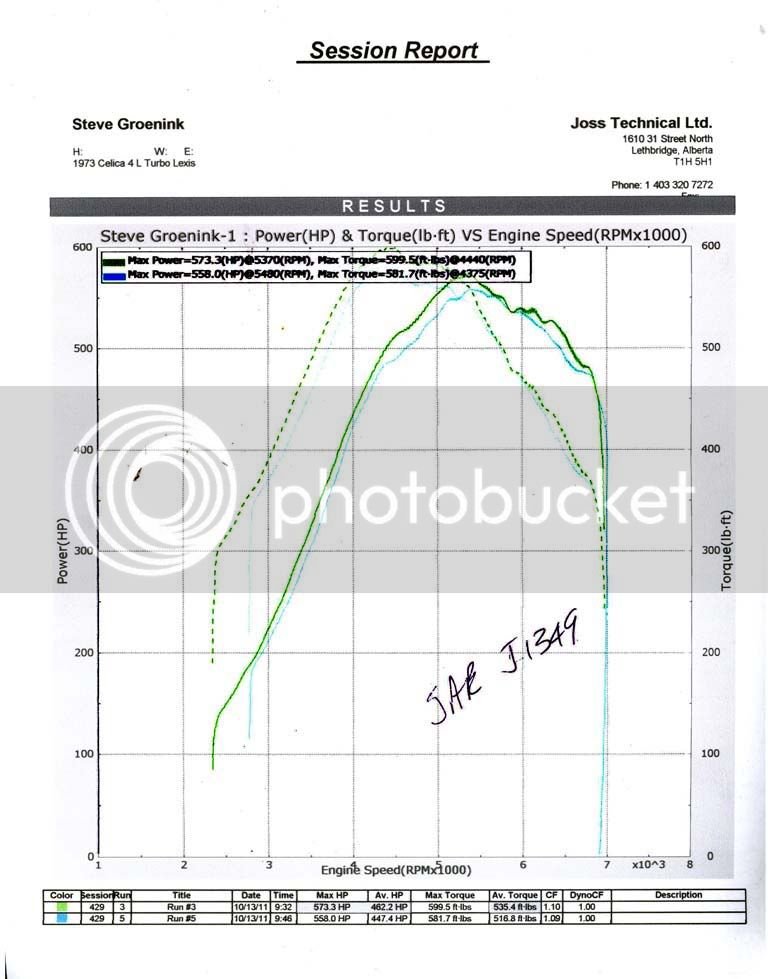stevieg
New Member
- Messages
- 228
- Location
- lethbridge alberta
Serious question, how am I making [email protected]
Relevant build information:
-7mgte 440cc injectors
-Precision Turbo Billet 6262 ball bearing, 0.58AR t4/v-band
-megasquirt AF/r is 11.4-11.8, timing is 22deg at 4krpm tapering to 20deg@7k
-Totally stock early crown majesta engine
-semi-log style manifolds 1.5" primaries->2" log->2.5" to a T4 merge collector
-38mm Precision wastegate
-Supra R154 trans
-stock upper and lower intake manifolds
-engine is entirely stock
-fuel pump is a bosch 044
-datalog shows peak dutycycle at 74% which if using a bsfc of 0.42 equates close to my uncorrected hp of 523whp
-datalog shows 186kpa max (12.4psi)
-12psi of boost only regulated by the wastegate spring, no boost controller yet
-94 octane pump gas (ron+mon/2)
-SAE J1349 correction factor
My question is not how am I making this HP as I did blueprint this build to make this HP goal but more of what did I fluke on to make this HP goal at only 12.4psi? Are these new Billet turbos just that awesome or is it my fairly agressive timing map (these engines do love timing)
here is dyno from this morning
Curious so I know what to do next time as I wasnt expecting to make this power until 16-18psi like everyone else???
steve
Relevant build information:
-7mgte 440cc injectors
-Precision Turbo Billet 6262 ball bearing, 0.58AR t4/v-band
-megasquirt AF/r is 11.4-11.8, timing is 22deg at 4krpm tapering to 20deg@7k
-Totally stock early crown majesta engine
-semi-log style manifolds 1.5" primaries->2" log->2.5" to a T4 merge collector
-38mm Precision wastegate
-Supra R154 trans
-stock upper and lower intake manifolds
-engine is entirely stock
-fuel pump is a bosch 044
-datalog shows peak dutycycle at 74% which if using a bsfc of 0.42 equates close to my uncorrected hp of 523whp
-datalog shows 186kpa max (12.4psi)
-12psi of boost only regulated by the wastegate spring, no boost controller yet
-94 octane pump gas (ron+mon/2)
-SAE J1349 correction factor
My question is not how am I making this HP as I did blueprint this build to make this HP goal but more of what did I fluke on to make this HP goal at only 12.4psi? Are these new Billet turbos just that awesome or is it my fairly agressive timing map (these engines do love timing)
here is dyno from this morning

Curious so I know what to do next time as I wasnt expecting to make this power until 16-18psi like everyone else???
steve
